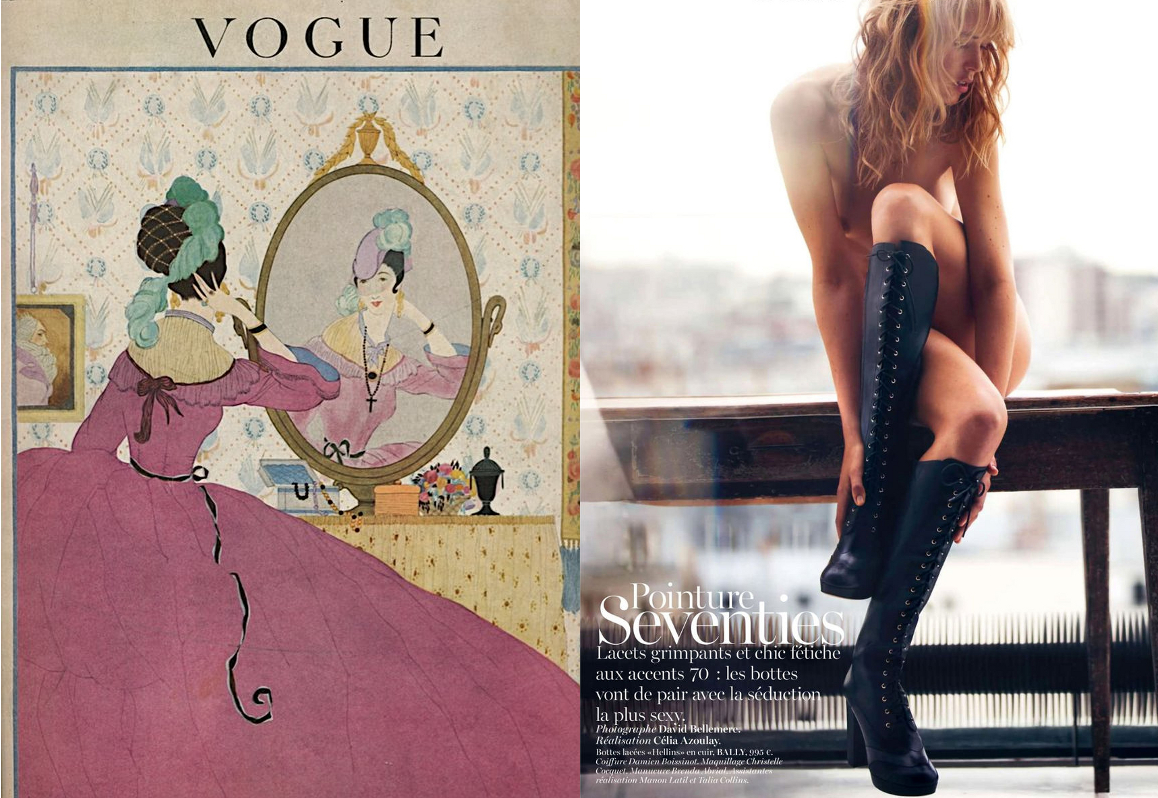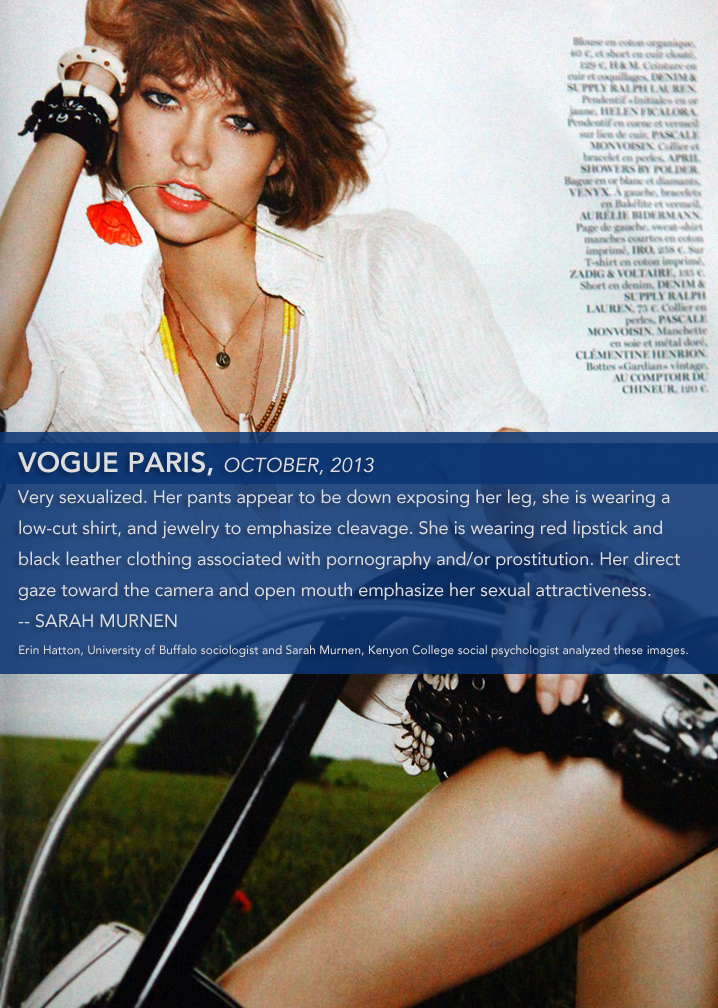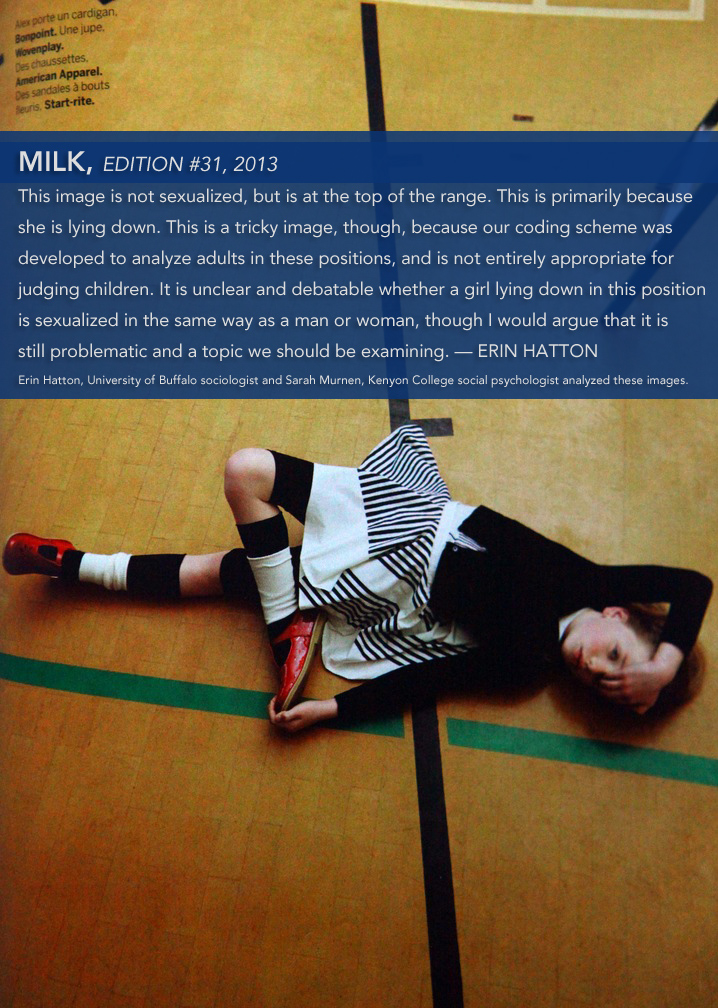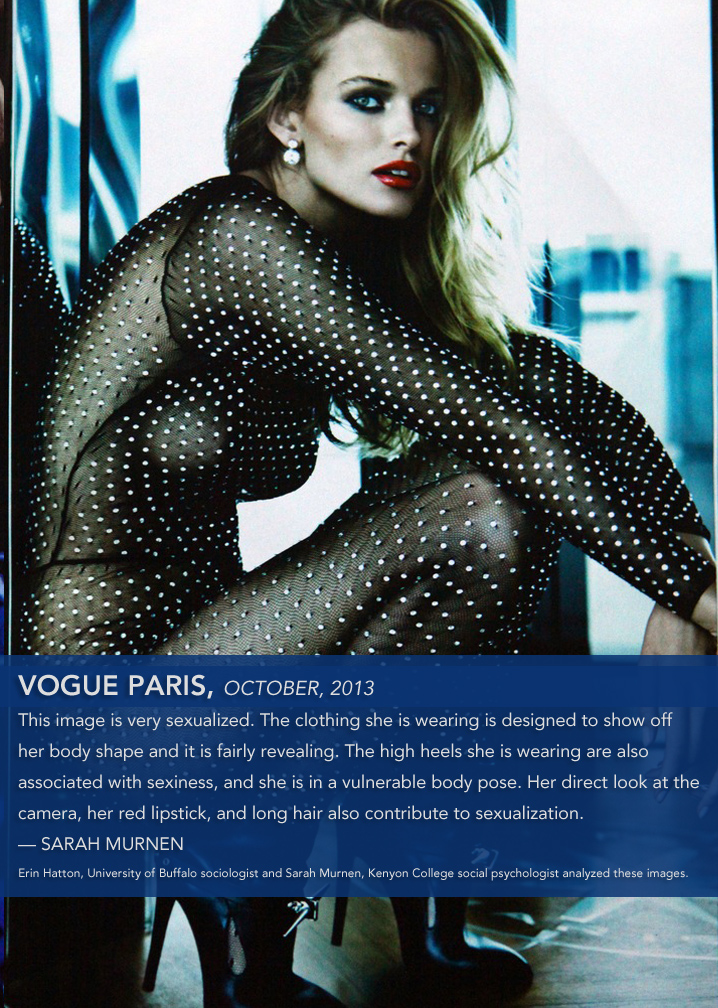Andrew Anglin
Daily Stormer
December 24, 2013

After French Vogue published borderline child porno on its cover in 2010, some various people got outraged, and it was demanded that the French government open an inquiry into the sexualization of media imagery, and how this could or could not be affecting children.
Experts were also called together in the US to try and figure out if media was more sexual than it should be, and if so, what should be done about it (note: nothing was ever done about it).
From PBS:
Social psychologist Sarah Murnen has studied the hypersexualization of women in media for more than 25 years. The research that she and her colleagues at Kenyon College conducted over the last several years found a steep increase in the pervasiveness of images in magazines that show young women in highly sexual ways. The American Psychological Association defines hypersexualization as “occurring when a person’s value comes only from his or her sexual appeal or behavior to the exclusion of other characteristics.”
“We’ve seen three trends associated with these images,” said Sarah Murnen, “It’s now common to see more parts of the body exposed. There is more emphasis on the size of women’s breasts. And easy access to all these images has made it all more acceptable to us.”
In Murnen and her team’s recent analysis of Seventeen magazine’s advertisements and articles, they found that the average number of sexualizing characteristics almost tripled over three decades. In particular, depictions of low-cut tops and tight fitting clothing increased.
In a 2008 study of 1,988 advertisements from 50 well known American magazines, researchers from Wesleyan University found that half of them show women as sex objects. A woman was considered a sex object depending on her posture, facial expression, make-up, activity, camera angle and amount of skin shown.
In images where women were shown in victimized roles, the study found that most of the time they were also portrayed as sex objects. The authors noted that such images may function to normalize violence against women.
Sociologists at the University of Buffalo reviewed more than 1,000 Rolling Stone cover images published over four decades. They found that sexualized representations of both men and women have become more common over time. In the 1960’s 11 percent of men and 44 percent of women on the covers were sexualized while in the 2000’s, 17 percent of men and 83 percent of women were sexualized. However, they concluded that women were much more likely to be “hypersexualized” — showing a combination of multiple sexualized attributes.
“It’s the intensity and extent of being sexualized — not just one or two elements, but much more — that we are seeing increase in the portrayals of women.” said Erin Hatton, coauthor of the study.
Some of these researchers, who are probably all getting paid six figures to give complex explanations of the obvious fact that the White Western world is now a degenerate, subhuman cesspit of degraded and broken people, got so scientific as to create a means to rate the sexualization level of an image.
Though purely academic, as we can all instinctively recognize a sexualized image from a non-sexualized image, this system is somewhat interesting.
These images were pulled off of a rack in France and analyzed by the experts.
The problem is nothing so complex as a confusing bunch of details about the presentation of images in media. The issue we are dealing with is one of the total collapse of traditional morality and its replacement with the image of man as a consumer – a happiness machine. The sexualization of society follows directly from the abolishing of man as a spiritual being and the embracing of the concept of man as a purely physical being, whose purpose is to develop and evolve, but to instead remain in a constant state of stimulation.
The core of any White society has always been the family unit. Aside from conceptions of morality, which modernists have framed as “abstract” and “relative,” sexual restraint (what the Jew Freud called “sexual repression,” and sought to “free” Christian society from) is the basis for maintaining a healthy family, where men and women remain satisfied with monogamous lifetime relationships. It is simply not possible to maintain high order without high levels of sexual restraint.
We are being dragged down to the level of the blacks, who have always had sex with each other like dogs, outside of committed relationships, and thus the structure of our social order is also lowering itself to this level.
The problem of hypersexualization cannot be dealt with in a vacuum, it must be looked at as an aspect of the larger problem of modernity, the solution to which is traditionalism. Traditionalism can only be achieved through authoritarianism. Once traditionalism is restored, the ruthless sexualization of society will be seen by the masses as clearly destructive to the basic fabric of society.
 Daily Stormer The Most Censored Publication in History
Daily Stormer The Most Censored Publication in History






